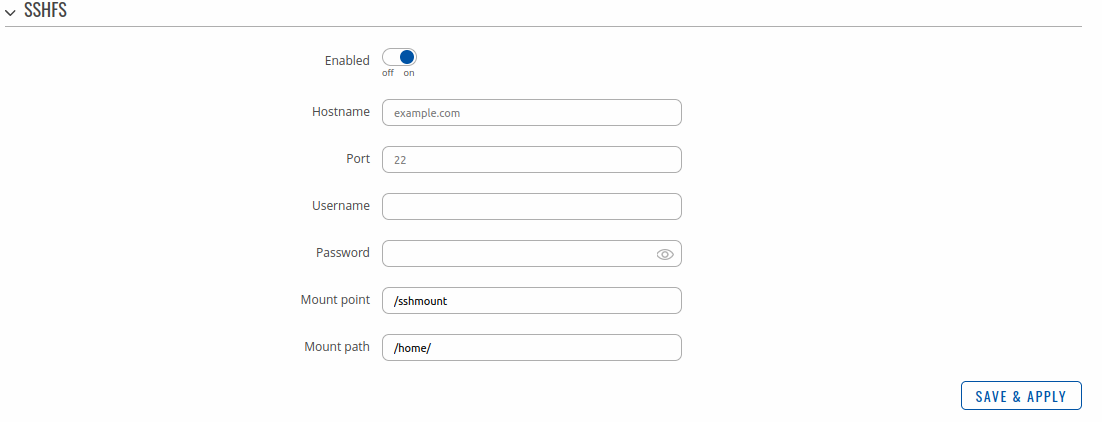RUT230 SSHFS
The information in this page is updated in accordance with firmware version RUT2_R_00.07.03.4.
Notice: This device has entered it's EOL (End of Life) cycle. For more information, visit our EOL policy here. Temporarily, some content in this page might not match features found in firmware listed above.
Summary
SSHFS is a tool, which allows you to mount a remote filesystem (in remote SSH server) to your RUT230 device using SSH. This service is safe to use as it authenticates connections and encrypts them.
This chapter of the user manual provides an overview of the SSHFS page for RUT230 devices.
SSHFS is additional software that can be installed from the System → Package Manager page.
SSHFS
SSHFS configuration consists of setting up authentication, port and mount information parameters. Below is an example oh the SSHFS configuration page.
| Field | Value | Description |
|---|---|---|
| Enable | off | on; default: off | Turns the SSHFS service on or off. |
| Hostname | string; default: none | Hostname of the remote SSH server. |
| Port | integer [0..65535]; default: none | Port of the remote SSH server. |
| Username | string; default: none | Username of the remote SSH server. |
| Password | string; default: none | Password of the remote SSH server. |
| Mount Point | filepath; default: /sshmount | Mount point of remote file system in the RUT230. Remote file system has to be mounted at root / level. By default the remote file system will be mounted on /sshmount, directory will be automatically created if does not exist yet. |
| Mount Path | filepath; default: /home/ | Mount path in the remote SSH server. For example, if SSH server is hosted on Ubuntu operating system, the Mount Path could look like this (depending on your needs): /home/username/ |

